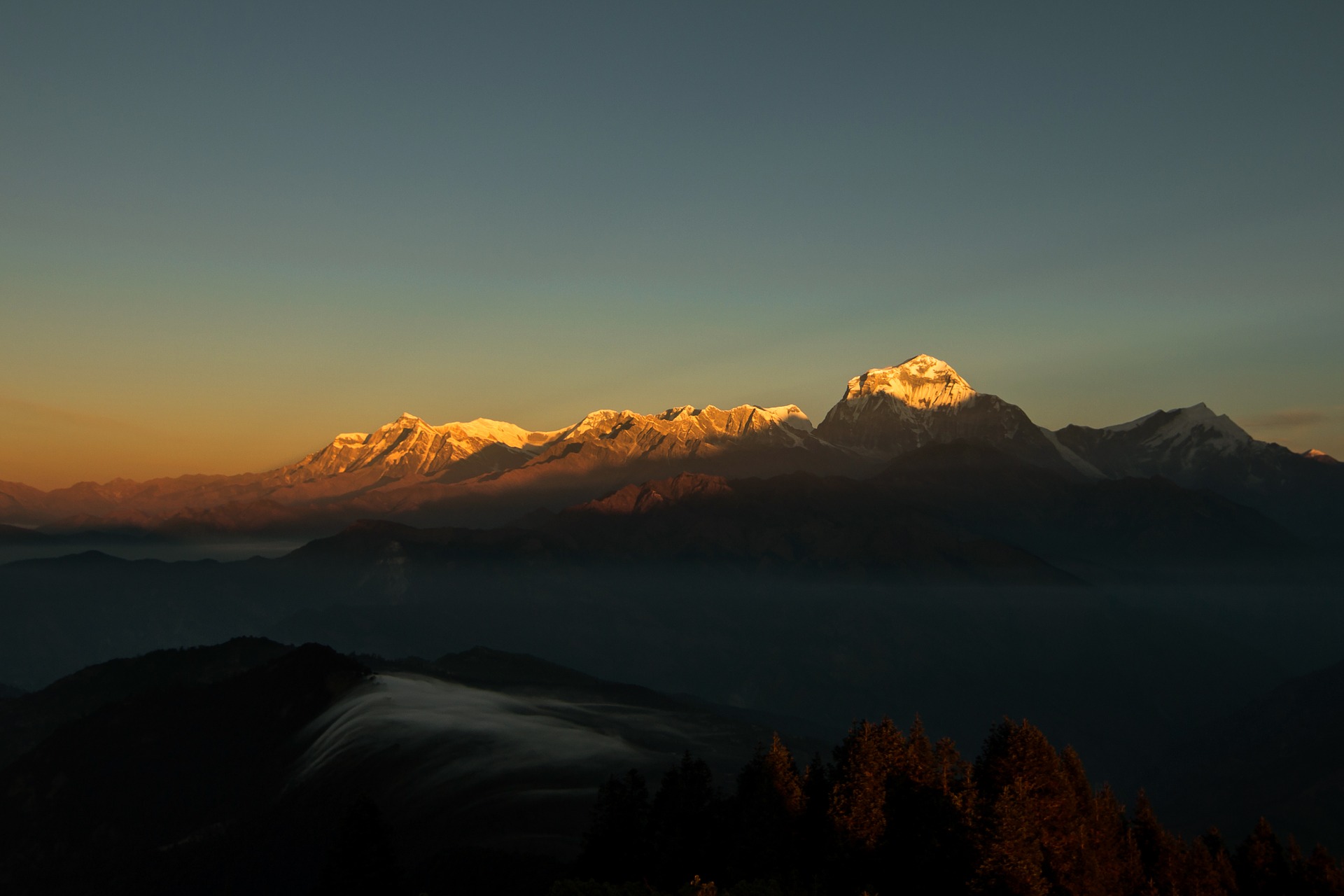
In Asia, China, India, Nepal, and Bhutan are home to one of the eight wonders of the world and one of the most beautiful mountains in the world, the Himalaya Mountains also called the Himalayas. Boasting as the world’s highest and most famous mountain peak, Mt. Everest.
Within the verse of the ‘Kumarsambhava’, Sanskrit poet Kalidasa defines the Himalaya as a gigantic measuring stick striding the face of the earth between two oceans. Snow-capped peaks are indeed a very impressive feature. The word “Himalaya”, is a Sankrit word, which means’ The Abode Of Snow or the Home Of Snow’. Other names used to describe this mountain range correlate it with eternal snow – “Himachal”, “Himvan”, “Himadri”, and “Himvat”.
In the ancient times, there was a vast shallow sea named the Tethys that existed where the Himalaya is today. The submerged landmasses on both sides started pushing towards each other giving birth to the Himalaya Mountains. This was a relatively recent occurrence according to the geographical time frame. It only proves to show that the Himalaya can be considered to be young and fragile land formation.
Scientists studying these mountains speculate that the entire process took about five to seven million years. There are proof of fossils found at heights of more 26,000 feet support these theories. The Himalaya has risen about 6,600 feet in the past 20,000 years and continues to rise at the rate 3 to 4 inches a year.
No other mountain range can boast having peaks of 26,000 feet. The Himalaya have 14 such peaks and hundreds of summits with over 23,000 feet high above sea level. The Himalaya Mountain range stretches 1,700 miles across an area between Assam, a state northeastern part of India and Kashmir. At the east, Namche Barwa stands as sentinel and the part is guarded by the awesome Nanga Parbat.
The Himalaya Mountains are the source of many great rivers in the Indian subcontinent. The Sindhu or Indus, called “The River rising out of a Lion’s Mouth”, comes from the trans-Himalayan Tibetan Plateau, same as the Brahmaputra. The Ganga and Yamuna, with their countless colorful Himalayan tributaries, are intertwined with local myths, legends where life started and are connected with belief and traditions.
Today, the Himalaya Mountains are one of the most beautiful and revered mountain ranges in Asia.
We want pictures and location of the lanforms around the world and we need your help. Click get started button below.
In Asia, China, India, Nepal, and Bhutan are home to one of the eight wonders of the world and one of the most beautiful mountains in the world, the Himalaya Mountains also called the Himalayas. Boasting as the world’s highest and most famous mountain peak, Mt. Everest. Within the verse of the ‘Kumarsambhava’, Sanskrit […]
Nature have provided us with fascinating landforms and features. The most often adored landforms are volcanoes. Like the perfect cone structure of Mayon Volcano in the Philippines or Mount Fiji in Japan, people look at their beauty and wonder with great appreciation to nature. Volcanoes are mountains with a very disastrous nature. Their only […]
Taal Volcano is the second most active volcano found in the province of Batangas. A complex volcano in the middle of Taal Lake and is often called an island within a lake, that is an island within a lake that is on an island as well as one of the lowest volcano in the […]
Mayon Volcano is one of the active volcanoes in the Philippines. Located in the southern part of Luzon about 473 kilometers (294 miles) from Makati Business District of the Philippines, Mount Mayon is the main landmark of the Province of Albay of Bicol Region. According to local folklore, the volcano was named after Daragang […]
The global temperature and weather is to a large extent a direct result of the sun’s effect to our planet. Together with the atmosphere and the rotation of the earth on its axis. The earth on which weather moves on has its own effect on the weather. The different landforms like mountains, volcanoes, plains, and the […]